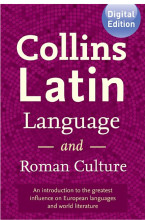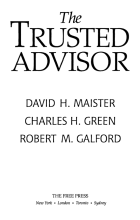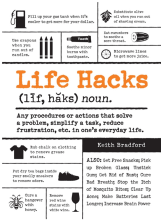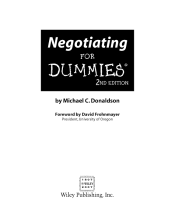Summary: The Handy History Answer Book | 9781578594313 | David L Hudson
- This + 400k other summaries
- A unique study and practice tool
- Never study anything twice again
- Get the grades you hope for
- 100% sure, 100% understanding
Read the summary and the most important questions on The Handy History Answer Book | 9781578594313 | David L Hudson
-
1 Eras and Their Highlights
This is a preview. There are 6 more flashcards available for chapter 1
Show more cards here -
When did History begin?
History began when human beings were able to document events in writing; anything prior to the advent of writing is commonly reffered to as prehistoric. Humans began to write approximately 3.500 years before Christ, and the Classical Age, which began with the rise of Greek civilization around 2.000 B.C.E. -
What is the prehistoric era?
The term Prehistoric era refers to the time before written history began, so it encompasses the:- Stone Age
- Bronze Age
- Iron Age
The Prehistoric era spans the time from about 2.000.000 B.C.C., to roughly 2.000 B.C.E., when the Classical Age began with the rise of the Greek and Roman empires. -
What is the Paleolithic Age?
Paleolithic literally means "Old Stone Age." Coined by archeologist John Lubbock (1834-1913) in 1865, it refers to the vast time period when humans used stone tools. It precedes the Mesolithic and Neolithic Ages. All three of these time periods - Paleolithic, Mesolithic, and Neolithic - are considered part of the Stone Age. -
Who divided human history into the three ages?
Danish archeologist Christian Jürgensen Thomson (1788-1865) receives credit for categorizing early world history into three ages based on the principal tools used by humans. These three periods are the:- Stone Age
- Bronze Age
- Iron Age
-
1.1 The Classical Age: 2.000 BCE To 500 CE
This is a preview. There are 10 more flashcards available for chapter 1.1
Show more cards here -
What is the Classical Age?
The Classical Age refers to the ancient Roman and Greek worlds, roughly 2.000 BCE to 500 CE. The Classical Age followed the Prehistoric era and preceded the Middle Ages. During this period, the ancient Greeks and Romans made contributions to literature, philosophy, science, the arts, and letters that are still relevant today. -
Who were Julius and Augustus Caesar?
Julius Caesar was a decorated general known for leading Roman soldiers to victory and conquest in Gaul. He later became the ruler of Rome, serving as dictator from 49 tot 44 BCE. Several senators, including a few of Caesar's friends, stabbed him to death in the Forum.
His grandnephew, Gaius Octavius, served as Roman Emperor from 31 BCE to 14 CE. He took the name of Augustus, which translates into "revered one." -
What happened to the Celts during the Roman Empire?
The Celts were an Indo-European people who by 500 BCE had spread across what is now France, Italy, Portugal, Spain, and the British Isles, and by 200 BCE had expanded as far as present-day Bulgaria and Greece. When the Romans conquered much of Europe (about 300 BCE), many Celts were absorbed into the Roman Empire. However, those Celts living in Ireland, Scotland, Wales, southwest England, and Brittany (in northwestern France) were able to maintain their cultures, and it is in these regions that people of Celtic origin still live today. -
What is known about the Celts prior to the Roman Empire?
Before Europe was conquered by Rome, Celts, who were themselves divided into smaller tribes, had become rather advanced in many ways. Their society was divided among three classes:- Commoners
- Educated
- Aristocrats
They formed loose federations of tribes, raised crops and livestock, used the Greek alphabet to write their own language, and were among the first peoples in northern Europe to make iron. They also developed a form of metalwork that most people today recognize as Celtic, called La Tène. They never formed one united nation, however, so that when Roman armies swept across Europe, the Celtic tribes were overrun. -
1.2 The Middle Ages: 500 To 1.350
This is a preview. There are 25 more flashcards available for chapter 1.2
Show more cards here -
What happened to the Ostrogoths?
The eastern division of the Goths, the Ostrogoths were overrun and absorbed by the Huns in 370. When the powerful Hun leader, Attila, died in 453, subjects of the Huns revolted and the Ostrogoths regained their freedom.
Theodoric (c. 454-526) became the rulerof the Ostrogoths in 493, and it was under his leadership that the group invaded northern Italy, where they remained. In the middle of the following century, they were overthrown by the armies of the Byzantine Empire. Like other Germanic tribes, the Ostrogoths were absorbed into the various groups of Europe. -
Who was Reccared I?
Reccared I (559-601) was a Visigoth king who ruled from 586 to 601. He converted to Catholicism in 587, marking a significant shift in policy. Previously, many Visigoths were members of Arian Christians, a Christian faction that believed Christ to be created by and subordinate to God the Father (based on the teachings of Arius; 250-336).
- Higher grades + faster learning
- Never study anything twice
- 100% sure, 100% understanding

































